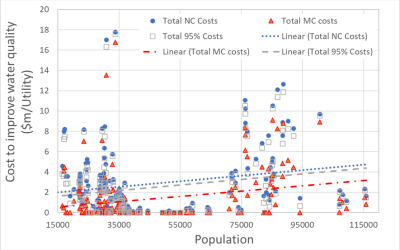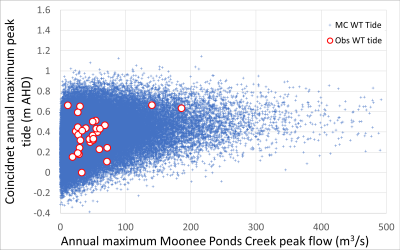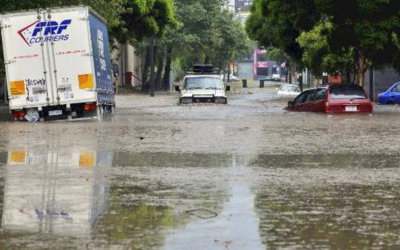
It was once a prevailing view that construction of Thomson Dam had solved the water security issues for Melbourne and emerging challenges of managing wastewater and stormwater across Melbourne did not seem to be front of mind. These challenges were certainly not seen as a systems problem. The extremes of our country produced fires, droughts and floods that prompted a broadening of thinking about our water cycle services and the liveability of our cities.
My own journey to the Living Victoria policy involved a quest to better understand the behaviour of our cities and towns as integrated systems, and belief that we can find additional opportunities. This led to the deconstruction of water, wastewater, stormwater, environmental, energy and economic systems that underpin the performance of our cities – this led to the exposure of otherwise hidden challenges and opportunities. It was then a significant challenge to explain why deconstruction of the actually integrated systems that drive a city reveal different insights. The quest to explain these new insights led me to talented individuals from the water industry, politics, bureaucracy and the international science community. The challenges of explaining systems outcomes certainly required the collaborative skill and patience of these people.
An integrated systems approach was required to understand and demonstrate the likely behaviour of our cities and the options for interventions throughout a region. A unique analysis was created that is dependent on detailed local inputs throughout the system, such as demographic profiles and human behaviour, and linked systems that accounts for water supply, sewage, stormwater and environmental considerations. A Systems Framework was built on local scale (the people) inputs (a “bottom up” process) rather than traditional analysis of metropolitan water resources that commences with regional scale assumptions and average (a “top down” process). These activities have revealed key principles for understanding water cycle systems that are the pillars of Living Victoria policy as follows:
- Cities and regions are not homogeneous for all parameters relevant to water cycle management such as demographics, socio-economics, climate, human behaviour (water use), topography and existing infrastructure (Cities are different everywhere). Analysis of water policy must include the spatial diversity and variability of a city in the planning and provision of infrastructure for water cycle management.
- The performance of a city (such as water demands, sewage discharges, stormwater runoff, environmental impacts and economics) for management of water resources is driven by the behaviour (actions and choices) of individuals at the local scale.
- The industry has historically prefered large scale centralised solutions such as desalination but the decentralised water saving actions of citizens ensured that water supplies were not exhausted during the recent drought. The community must be partners in multiple scale strategies for water cycle management for cities.
- Stormwater runoff and wastewater discharges from most cities are greater than the volumes of water that those cities use. These currently under-utilised local water sources including rainwater, stormwater and wastewater can be used to ensure the security of water supplies for a city whilst also increasing the local amenity of the city.
- The behaviour of the water cycle for a city is actually dependent on the linked or integrated responses between the elements (water supply, wastewater discharges, stormwater runoff and environmental impacts). For example, stormwater runoff generates peak discharges and surcharges in wastewater infrastructure; and harvesting rainwater and stormwater can reduce impacts on waterways including flooding, stormwater pollution and erosion. Adoption of integrated water cycle management (IWCM) strategies accounts for the actual integrated behaviour throughout a city.
- The broader water industry (water authorities, local government, the private sector and the community) have already delivered a diverse range of innovative projects – many more projects are needed but the industry has demonstrated the capability and capacity to deliver innovative solutions. New water policy is required to provide an authorising environment for IWCM projects and innovative solutions.
- The current practice for water supply, wastewater and stormwater management involves transfer for water across long distances that use large amounts of infrastructure and resources – traditional water management is a transport logistics problem. New water policy should aim to minimise the distance and volumes of water, wastewater or stormwater that are transported across a city.
- The costs of managing water cycle services (water supply, wastewater discharges and stormwater runoff) for a city includes operation, replacement and provision of infrastructure. The water industry should include of the all costs of infrastructure in decisions about strategies for water cycle management.
- The transfer of water from dams (such as Thomson Dam) or desalination plants across a city to supply water demands at each location in Melbourne (such as Werribee) includes cumulative costs throughout the system (management of dams, treatment plants, pumps, large transfer pipes and local infrastructure). A large proportion of this water is then discharged as wastewater from a building in Werribee that includes cumulative costs throughout the system of local infrastructure, pumps and rising mains to a wastewater treatment plant (such as Western Treatment Plant near Werribee). Analysis of water cycle strategies should include the cumulative costs and benefits of water cycle management throughout a region.
- Investments in water infrastructure are mostly dominated by large scale infrastructure that is provided in preference to smaller and less expensive local solutions – this strategy involves long repayment periods, high financial costs and risks of delayed financial returns. Water policy should aim to build the resilience and affordability of water cycle strategies by including smaller scale solutions throughout the investment cycle – this process opportunistically minimises the timing and magnitude of infrastructure investment, and financial impacts on state budgets (Optimise the timing of investment in water cycle infrastructure – avoid lumpy “just in time” investments).
- There are not always opportunities for innovative large scale projects but there are always opportunities to encourage water efficient practices and buildings throughout a city. For example, the greater Melbourne region is subject to high population growth which involves rapid development and renewals of buildings – water efficiency must be included in these buildings. Similarly, the best time to save water is when there is water in storages and it is raining. Water policy must include ongoing water efficiency as a core business strategy.
- Finding the Pareto Optimum solutions (solutions with multiple benefits) – the best answers for water cycle management throughout a city will include multiple benefits (including water supply, wastewater and stormwater management, economics, amenity, health of the environment and the well-being of citizens) and trade-offs between various costs and benefits. For example, a water efficient toilet saves water and reduces wastewater discharges; and a rainwater tank saves water and reduces stormwater runoff with associated impacts on waterways. Water policy should aim for solutions that provide multiple benefits (The best solutions provide multiple benefits throughout society).
- Water cycle management and policies must respond to the continuous evolution of cities and society.
- Analysis of water cycle management for a city must utilise appropriate spatial and temporal boundary conditions that allow balanced and comparable economic assessment of options. For example analysis of the economic impacts of a water efficient toilet must include the impacts across the entire water and wastewater systems in a city (such as requirement to operate, renew and provide infrastructure across multiple scales) at a planning horizon that accounts for the full life of infrastructure.
One of the most rewarding outcomes from the Living Victoria process has been an increase in discussions and collaboration throughout the water industry. It is exciting to witness the inclusion of many people across multiple disciplines and agencies in this process. Melbourne’s Water Future is currently in the process of shakeholder and community engagement prior to final submission to Water Minister Peter Walsh and the State Cabinet.
See http://www.livingvictoria.vic.gov.au for more information. Finally, I would like to acknowledge the collaboration of many people, including Dr Michael Barry, Mike Waller, Simon Want, Germanus Pause and Peter Walsh, to this journey.






